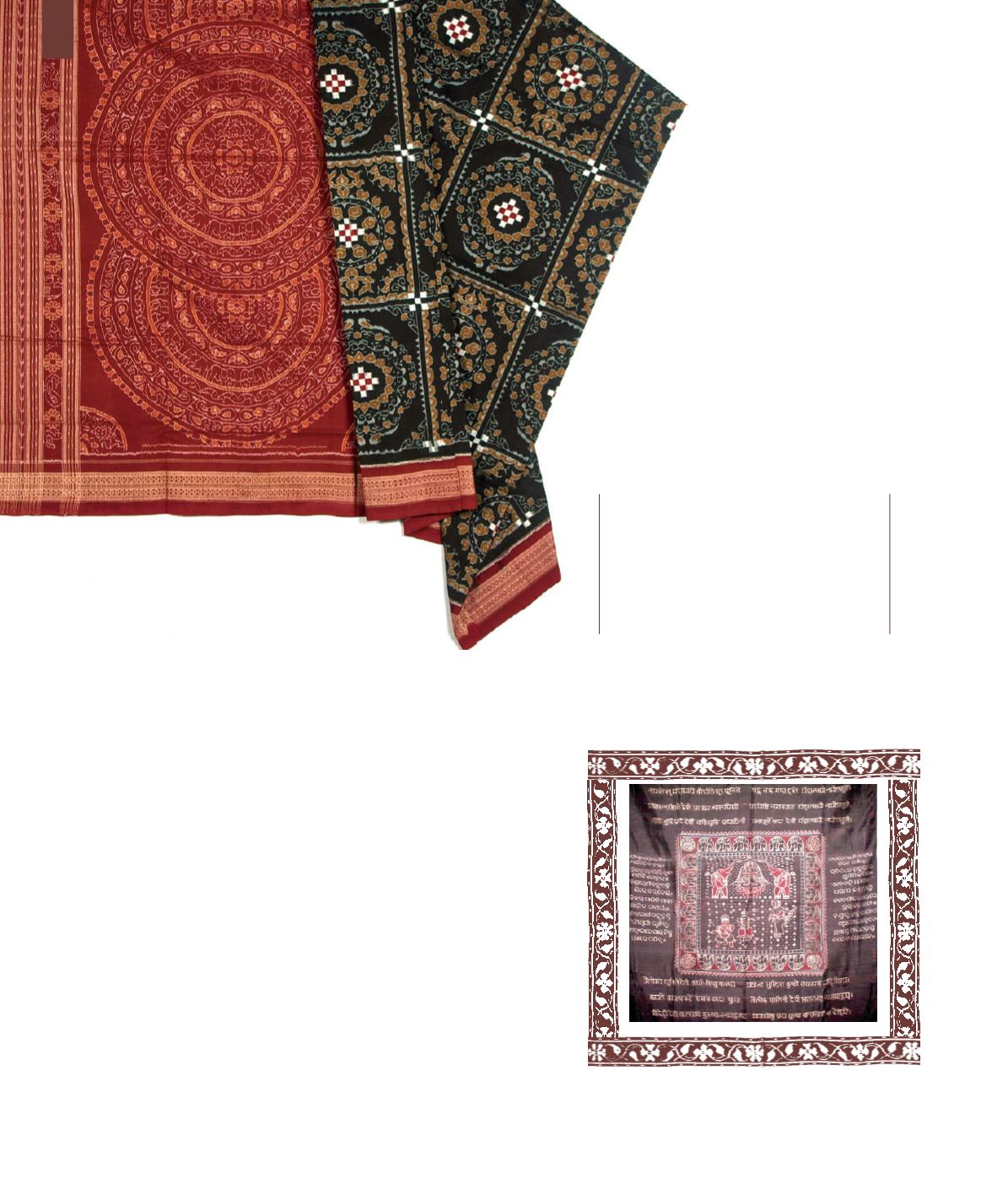
70
cotton plant! One of my most precious works is a red textile woven with
an outline of the Jagannath Temple and the three deities– Lord Jagannath,
Lord Balabhadra and Goddess Subhadra – in the lower section of the
textile. Creating these textiles goes beyond calculations of tie-dyeing,
alertness when setting the loom and accuracy when weaving for they are an
expression of devotion.
The end-panel conveys how exquisitely the Odia weaver has been able to
transform his ideas onto cloth. A weaver’s mind is always thinking of new
patterns and compositions to be created on sarees and which colours will
best bring out the beauty of that pattern or composition. Purely working
from a mental picture, the weaver makes calculations and dyes the yarn so
that when it is set on the loom and the weft yarns are woven, the motifs
and patterns will emerge in attractive colour combinations. There are many
other countries in the world such as Japan, China and Indonesia that also
have an Ikat tradition. But none of them have managed to translate the
region’s cultural influence and aesthetics as the Odisha Ikat has done. The
Sambalpuri silk and cotton Ikat sarees have been widely acclaimed on an
international level. Adding to the beauty of the end panel are the rows of
narrow bands bearing small motifs such as of flowers.
A weaver’s mind is always
thinking of new patterns and
compositions to be created on
sarees and which colours will
best bring out the beauty of
that pattern or composition.


